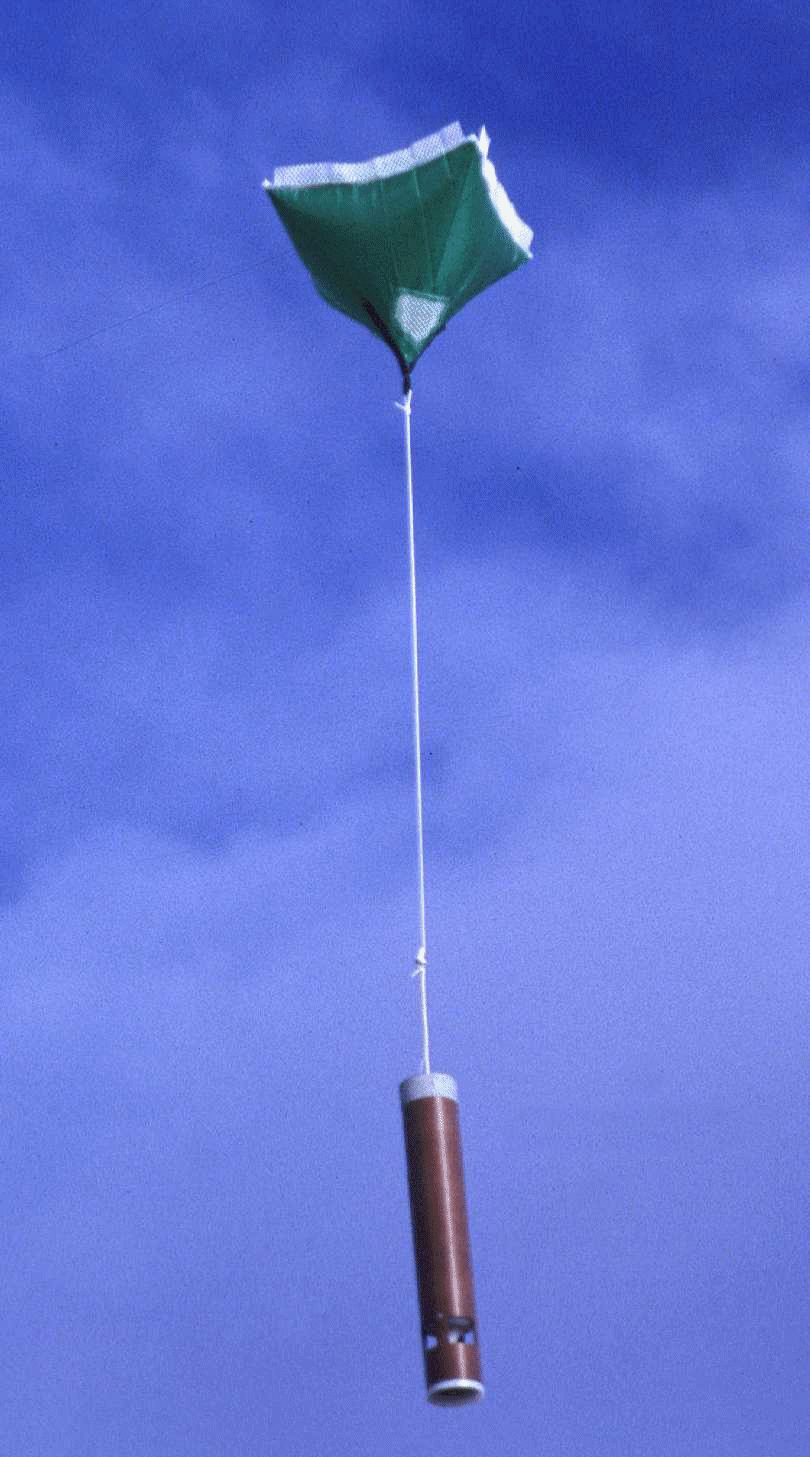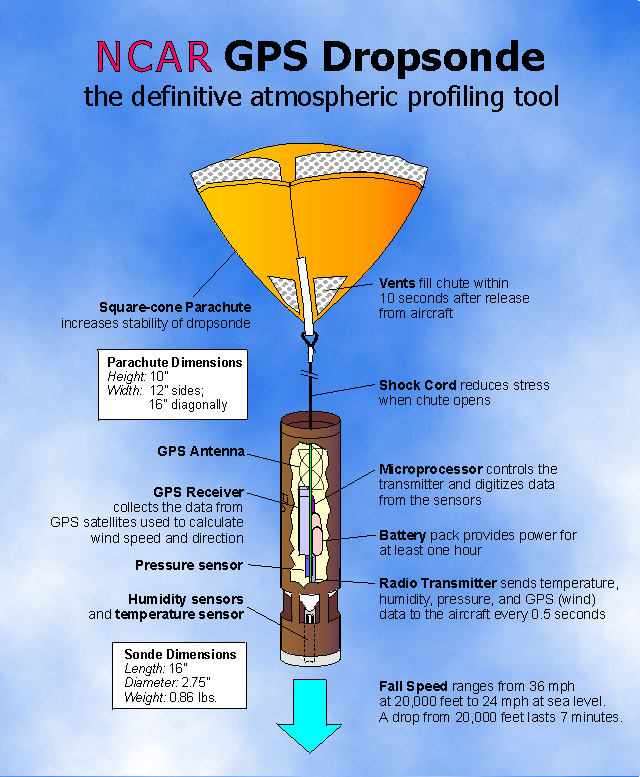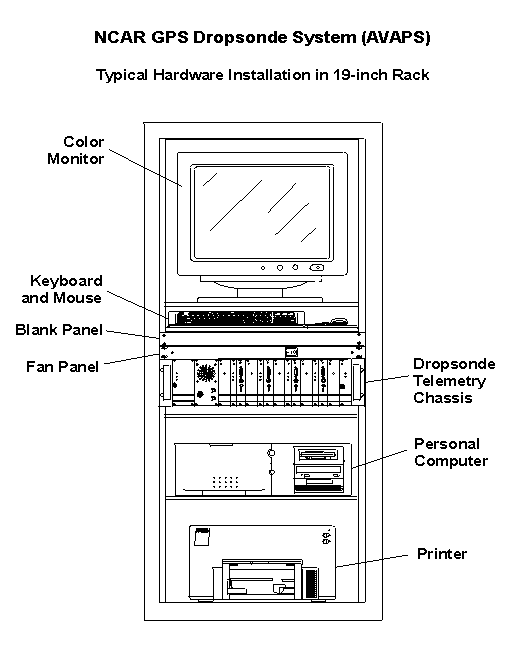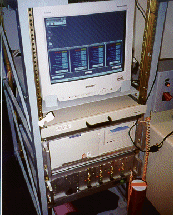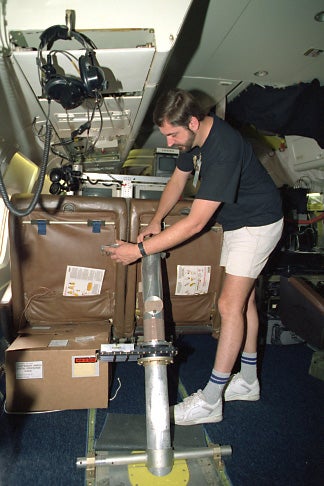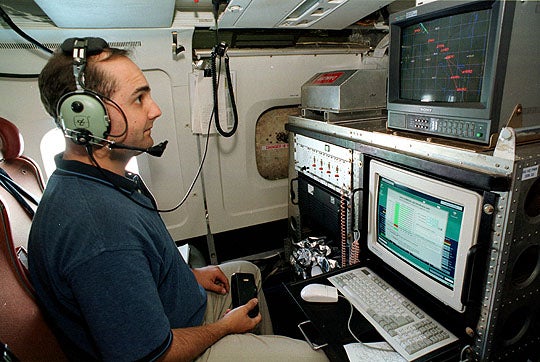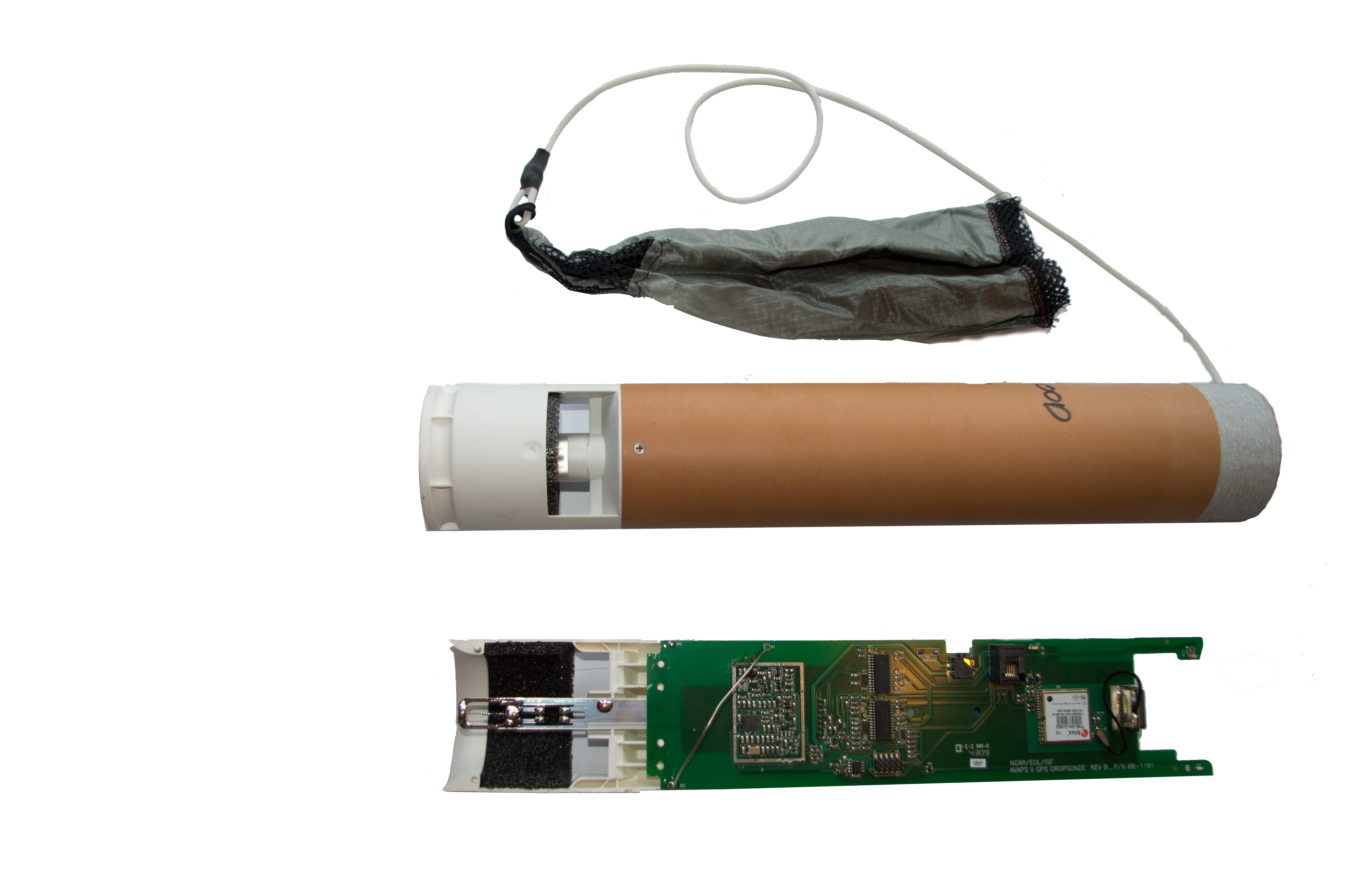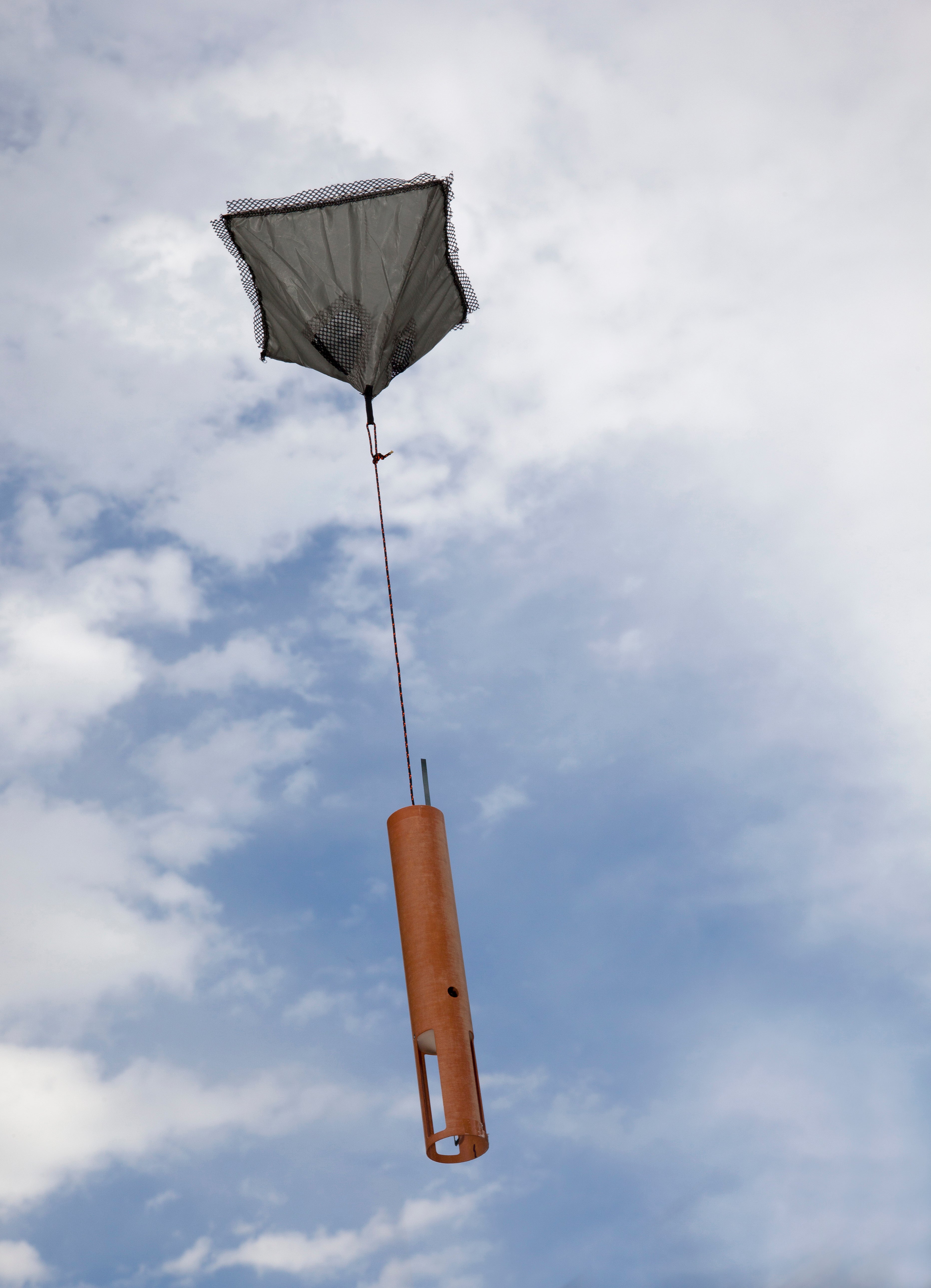DEVELOPMENT OF THE NCAR GPS DROPSONDE SYSTEM
NCAR's Atmospheric Technology Division (ATD) developed the first Omega-based dropwindsonde (ODW) in the early 1970's for the Global Atmospheric Research Program's (GARP) Atlantic Tropical Experiment (GATE). NCAR continued development and improvements of the ODW for the Global Experiment in the late 1970's and these sondes were used successfully (about 7,000 dropped) to study the influence of the tropical oceans on Northern Hemisphere weather and climate. After the Global Experiment, the dropwindsonde continued to be used by NOAA's Aircraft Operations Center (AOC) for hurricane research. In 1982 the ODW was adopted by the U.S. Air Force Air Weather Service's Hurricane Hunters for their mission to support the National Hurricane Program.
In 1987, EOL's Surface and Sounding Systems Facility (SSSF) began the development of an advanced digital dropsonde to support the Office of Naval Research's (ONR) 1988-1989 Experiment on Rapid Intensification of Cyclones over the Atlantic (ERICA). This development produced the Lightweight LORAN Digital Dropsonde (L2D2), a smart (microprocessor-based) sonde that was lightweight (300 grams vs. 1500 grams for the ODW), incorporated LORAN instead of Omega (Omega was added later in a redesign for the Air Force) for windfinding, and used digital instead of analog circuitry to measure the state parameters and telemeter the data back to the aircraft. This new digital sonde reduced or eliminated noisy data and also provided the capability (extra channels) for the incorporation of other measurements. The Lightweight Digital Dropsondes (LD2) have supported numerous national and international field programs, including STORMFEST, TOGA COARE, and CEPEX. They have been successfully launched from a variety of aircraft: the U.S. Air Force WC-130, the NCAR Electra, C-130, Sabreliner, and King Air, the University of Wyoming King Air, the NASA DC-8, NOAA P-3's, the Aeromet Learjet, and the DLR Falcon. In 1992 NCAR licensed the LD2 design to Radian Corp., Austin, Texas, which manufactured the sonde for use by the Air Force and the worldwide community.
In 1993, SSSF performed a feasibility study for the German Aerospace Research Establishment, DLR, for an advanced lightweight digital dropsonde incorporating GPS, in support of DLR's development of a new high-altitude research aircraft. The German aircraft company, Grob, had been contracted to develop a human-crewed stratospheric research aircraft, the STRATO 2C, designed to fly at altitudes between 16 and 24 km for up to 48 hours. A human-crewed aircraft flying at these altitudes would open up many research opportunities: studying the ozone deficit in the Antarctic and Arctic vortices, the effect of clouds and aerosols on radiation transfer, the global radiation budget, the distribution of climate-related trace gases, and the movement of tropical cyclones. Most of these research missions are aided by, or require, an atmospheric profile below the aircraft-a task best done, on a global basis, with a GPS dropsonde.
After completing of the DLR study, SSSF learned that NOAA's Aircraft Operations Center was purchasing a new Gulfstream IV (G-IV) jet for use in weather reconnaissance and research missions. A primary requirement in many of the new jet's mission profiles was that of measuring and recording the atmospheric conditions below the aircraft with a dropsonde system that could be operated worldwide.
The requirements for the DLR STRATO 2C and NOAA G-IV dropsonde systems were nearly identical, including the time schedule for delivery. In addition, NCAR's future support for national and international research programs with dropsonde systems both with the NSF/NCAR C-130 and Electra and in other research aircraft (e.g. NASA DC-8) also required a new system with worldwide operational capability to replace the existing Omega and LORAN systems. This need was primarily driven by the shutdown of the Omega navigation system in 1997 and the potential loss of the LORAN system around 2008. The marginal vertical wind resolution of Omega and LORAN was also a major consideration. Because of the required smoothing interval (60 sec), the vertical wind resolution is only on the order of 300 meters for LORAN and still worse with Omega. GPS promised far superior accuracy in wind profiling. As a result of the mutual requirements for a GPS dropsonde system, NCAR entered into a joint agreement with NOAA and DLR to develop the new GPS dropsonde and aircraft data system with the three organizations sharing the costs for the common portions of the program.
The following are the original NOAA/DLR/NCAR dropsonde system design requirements, now specifications of the operational system.
Global operation, at altitudes up to 24 km
Deployment at indicated airspeeds up to 250 kts
Simultaneous operation of up to four sondes (4-channel data system) in the 400-406 MHz Meteorological Band
Sonde descent time approximately 12 minutes when released from 12 km
0.5-second sample rate for wind and thermodynamic data
Sonde weight < 400 grams
Sonde size 2.75 inches (6.98 cm) diameter by 16 inches (40.6 cm) long
Sonde shelf life 3 years
Operational telemetry range of 325 km
